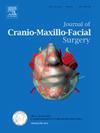颌骨中央巨细胞肉芽肿的诊断和治疗:一项欧洲和多中心研究。
IF 2.1
2区 医学
Q2 DENTISTRY, ORAL SURGERY & MEDICINE
引用次数: 0
摘要
中央巨细胞肉芽肿(ccggs)是一种良性但局部侵袭性的罕见肿瘤,影响骨骼,特别是颌面区域。这项欧洲多中心研究的目的是描述和评估欧洲不同口腔颌面外科中心的cgcg的特征、诊断、治疗和复发。方法:记录2014年1月1日至2023年12月31日欧洲所有口腔颌面外科单位收治的cgcg患者的数据。结果:符合入选标准的CGCG患者76例,其中男37例,女39例。研究人群诊断时的平均年龄为41.8岁。在下颌骨发现53个病变,最常累及的亚部位是下颌骨副骨骺。总的来说,75.0%的cgcg是单眼的。最常见的治疗选择是单纯的手术。12例复发(15.8%),平均随访41个月。讨论:为了预测其自然历史和指导非手术治疗,需要进一步的遗传和分子研究ccggs的潜在途径。同时,外科医生应平衡高复发率与低手术发病率的风险,考虑临床和影像学特征、患者的年龄和合并症,制定个性化的治疗方案。建议对治疗后的cgcg患者进行前5年的影像学随访。本文章由计算机程序翻译,如有差异,请以英文原文为准。
Diagnosis and management of central giant cell granulomas of the jaws: a European and multicenter study
Introduction
Central giant cell granulomas (CGCGs) are benign but locally aggressive rare neoplasms that affect the bony skeleton, particularly the maxillofacial region. The purpose of this European multicenter study was to describe and assess the characteristics, diagnosis, management, and recurrence of CGCGs at different European oral and maxillofacial surgery centers.
Methods
The data from all the treated CGCGs from the involved oral and maxillofacial surgical units across Europe between January 1st, 2014 and December 31st, 2023 were recorded.
Results
A total of 76 patients, including 37 males and 39 females diagnosed with CGCG met the inclusion criteria and were included. The mean age of the study population at diagnosis was 41.8 years.
Fifty-three lesions were found in the mandible, with the most frequently involved subsite being the mandibular parasymphysis. Overall, 75.0 % of included CGCGs were unilocular. The most frequent treatment option was surgery alone. A total of 12 recurrences (15.8 %) were observed with a mean follow up of 41 months.
Discussion
Further genetic and molecular studies regarding the pathways underlying CGCGs are needed, in order to predict their natural history and to direct non-surgical therapies. In the meantime, surgeons should balance the risks of higher recurrence rates associated with lower surgical morbidity, performing an individualized treatment plan, taking into consideration the clinical and radiological features together with the patients’ age and comorbidities. A radiographic follow-up of patients with treated CGCGs could advised for the first 5 years.
求助全文
通过发布文献求助,成功后即可免费获取论文全文。
去求助
来源期刊
CiteScore
5.20
自引率
22.60%
发文量
117
审稿时长
70 days
期刊介绍:
The Journal of Cranio-Maxillofacial Surgery publishes articles covering all aspects of surgery of the head, face and jaw. Specific topics covered recently have included:
• Distraction osteogenesis
• Synthetic bone substitutes
• Fibroblast growth factors
• Fetal wound healing
• Skull base surgery
• Computer-assisted surgery
• Vascularized bone grafts

 求助内容:
求助内容: 应助结果提醒方式:
应助结果提醒方式:


